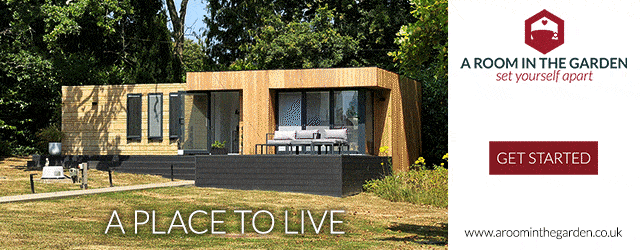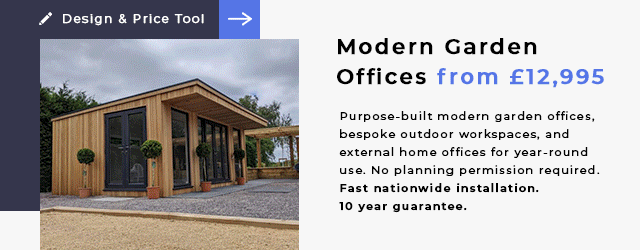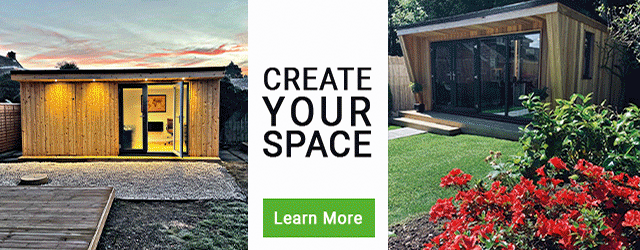The last few weeks of exceptionally hot weather have gotten us thinking about the design tricks used to ensure that a garden room is a comfortable space to spend time during a heatwave. Many buyers key concern when buying a garden room is that will it be a comfortable place to spend time in winter, but with our summers becoming hotter, we need to think about the ways we can keep it cool too.
The common design standards adopted by the garden room industry, such as the multi-layer build-up and house quality doors and windows, all add up. Each layer in this build-up, particularly the insulation in the floor, walls and roof structures, mean that you are buying a building that can be warm in winter and cool in summer. There are, however, some design tricks that can enhance the coolness of your garden room on the hottest days of the year. You might want to consider incorporating some of them into your new building.
Eaves detail can cast shade
Cube shaped garden rooms have become popular because people like the clean lines of having the wall run straight up to the roofline. There is, however, a benefit to choosing a roofline with eaves detail. Deep eaves details can be a useful design trick in summer when the sun is high. They can cast shade into your room, diffusing the amount of sunlight that is beaming into the room. The clever thing is that the eaves do not exclude light in winter when we want as much quality light entering our room as we can get. This is because as the sun is lower in summer, the eaves do not block the trajectory of the suns beam.
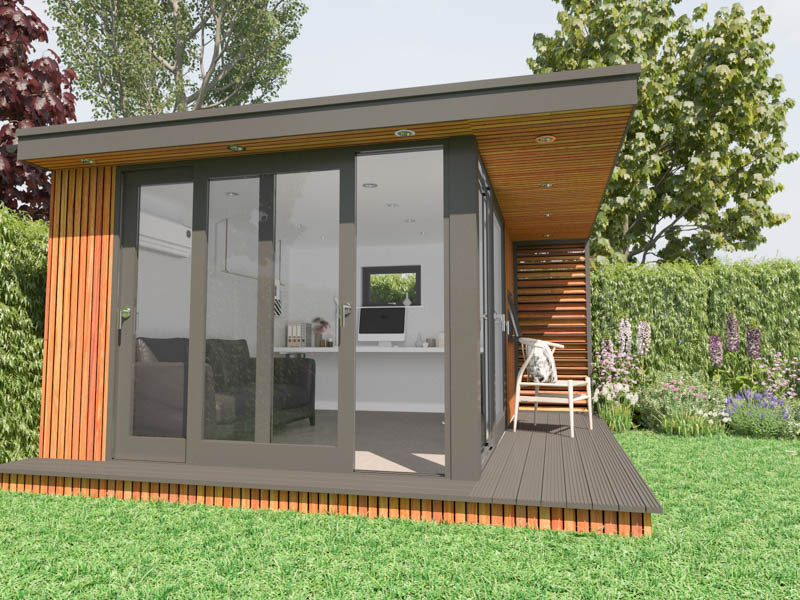
Verandas also offer a shady space to sit
Covered veranda and deck areas offer similar natural shading as deep eaves details. The roof canopy casting shadow into the room when the sun is at its highest in summer. They can also offer a shady seating area outside the garden room. If you like the idea of sitting out on your veranda, give some thought to the depth you choose. There is nothing worse than sitting in your chair feeling you might topple off the edge!
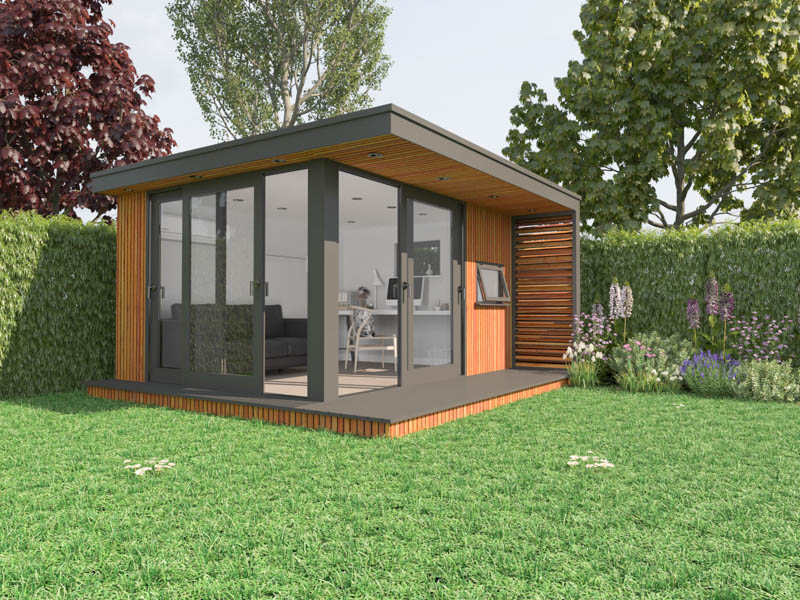

Openings on more than one elevation
A design trick that has come into its own this summer here at Garden Room HQ is to have doors or door/window combinations on more than one elevation. Many buyers choose to focus the glazing on the front wall, and this is fine, but there are benefits to having a cross-flow of air in the room.
As we sit and work here at Garden Room HQ, having the doors open on two sides is providing a gentle breeze through the room. We could have achieved a similar flow of breeze by having the doors mixed with an opening window on another wall.

Don’t forget an opening window
With the fashion for floor to ceiling glazing, many of the garden room buildings we see don’t have an opening window. The only way of getting air into the room is to open a door. The windows used in glazed walls tend to be fixed pane windows. They are the most cost-effective way of creating a large expanse of glazing. Some higher end companies will offer the option of tilting full height windows, which lets in air at the top and bottom. Other companies will offer the option of dividing the full height window with an opening section at the top. This can be a good compromise as it offers the flexibility to easily open a window, but if we are honest, to our eye the frames of these openers, divide the glazing up too much.

The solution that many buyers are choosing is to have the feature section of floor to ceiling glazing and combine it with an opening window on another wall. Rectangular, top hung windows have become the style of choice in these instances. They come in varying sizes from wide to very small.

These windows tend to be positioned at desk height, framing a view of the garden as you sit. Otherwise, they are being positioned high up in a wall. This is a clever trick if the view on the other side of the wall is not great or you might overlook a neighbour with a lower window.
Control the light with blinds
Most garden room companies offer the option of blinds for the doors and windows. They are an expense but can be worth considering for the ease at which they allow you to control the light in the room. Any type of blind could be used at the windows, but the most common option is Venetian blinds.

The standard option would be to have the blinds fitted to the door and window frames. Some companies, often the bespoke design specialists, also offer the option of blinds fitted within the glazing itself. This is a slick, yet more expensive option. You control the blind with magnets.
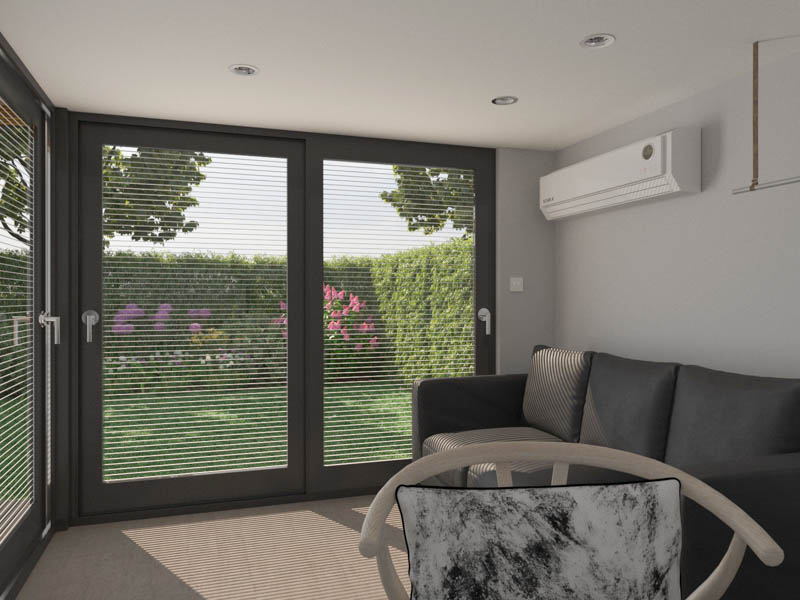
Blinds are useful, as you can easily open as them, as the sun moves around the room.
Louvred screens can diffuse the light
Some companies offer the option of a louvred screen. Typically they are placed at the end of a veranda area, supporting the roof canopy. Often, they just act as a decorative option, different to a section of solid wall. For a louvred screen to be effective in diffusing light, it needs to be positioned, so that is casts shadow over a door or window. If you decide to add one, think about how the sun will move around your building and decide where to position it depending on where it will be most effective.
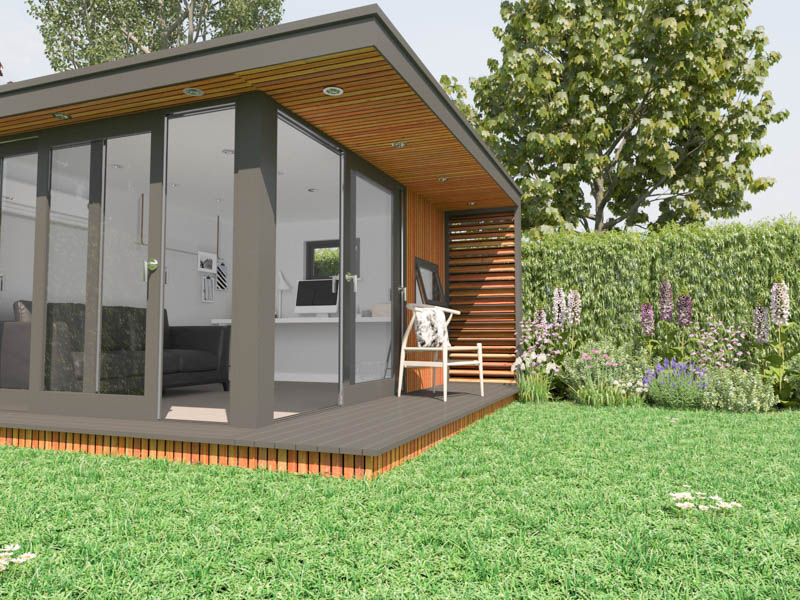
Some bespoke garden room designers will offer the option of incorporating adjustable screens as an alternative to using blinds inside the room. These screens work like sliding doors, running along a track so that they can be easily positioned in front of the glazing where you want to diffuse the light. The screens are normally designed so that they sit discreetly over a solid section of wall when not in use.
Air conditioning for precise temperature control
The options we have discussed so far, all control the amount of sun and breeze entering the room, which will affect the temperature inside. The way to ensure the temperature inside your room is comfortable for you is to install an air conditioning system.
There is no denying that this is an expensive option, and some consider it not environmentally friendly. Although, we know that designers have spent considerable time researching the air conditioning systems they offer, to ensure they are as efficient as possible.
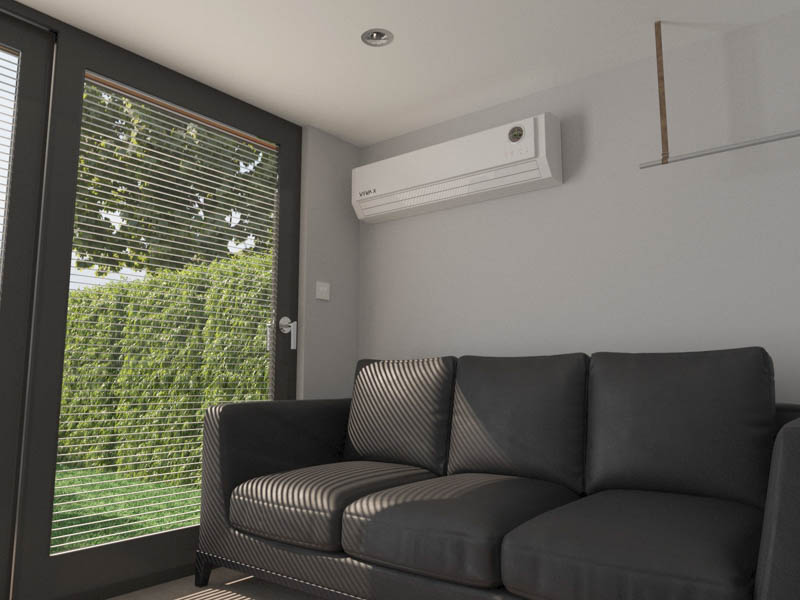
Air conditioning allows you to set the desired temperature and the room will cool or heat up to achieve the desired temperature.
Air conditioning systems are made up of two units. One sits outside the building, often away from view. The other unit is positioned within the room, normally high up on the wall.
Your garden room designer will have ideas too
These are just a few design tricks you could use to ensure your garden room is comfortably cool in summer. Your garden room designer will have others to suggest. Take a look at the work of these companies who will be happy to advise you.





